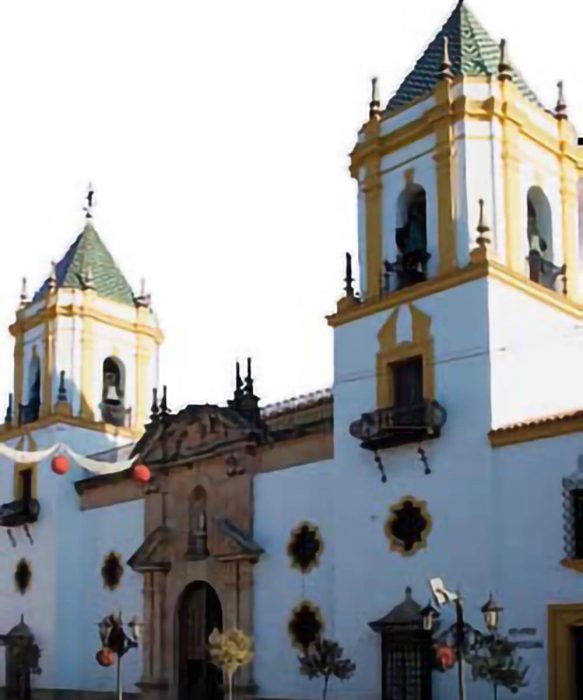Apparently its origin dates back to the end of the 16th century, when, due to the constant epidemics suffered by the population, a small lazaretto with its corresponding hermitage was founded, later joining the building a hospital for the poor and passers-by called del Socorro, whose space it was blessed and consecrated on November 2, 1577 by the Bishop of Malaga Francisco Pacheco de Córdoba.
The advance of the population and the growth of the cult and devotion to the Virgen del Socorro led to a rebuilding and expansion of the entire building in 1709. In the 19th century it was already the main parish of the Mercadillo. At the beginning of the 20th century, Mrs. Carmen Abela remodeled the church and the square again. The center of it becomes a walk for the winter season, as the Alameda was closed at that time due to the strong winds that reigned there. The Casino was installed on another side at the end of the last century, and the rest of the square was surrounded by buildings of the time, keeping a great uniformity as a whole, which today has completely lost with the replacement of many of these houses by higher buildings that completely break the nineteenth-century flavor of the square.
During the civil war it was burned down and completely demolished, disappearing a very rich sculptural and pictorial heritage, although certain written and graphic testimonies have left evidence of the primitive morphology of the building and some of its most important works. The façade of the church still preserves a niche with a precious Baby Jesus hugging the cross, made of marble, of great artistic interest, the work of the great Ariateño sculptor, and still little considered, Enrique Marín Higuero.
The current factory shows a square plan of three naves covered with five domes distributed in the transept and the four perimeter angles. The chapels and roofs are decorated with Baroque-style plasterwork. The façade is flanked by two bell towers with decreasing quadrangular sections crowned by tiled spiers. The cover is of great simplicity but very harmonious, presided over by the shield of Spain fused with that of Felipe IV, accompanied by two cartouches with the arms of Ronda broken down.
At present, this Ronda temple has some very interesting sculptural works by the Sevillian artist Sebastián Santos Rojas, made in the 20th century, among which the Virgen del Socorro, Inmaculada Concepción, San Antonio de Padua, Dolorosa and Buen Pastor stand out.
Socorro Church

Comments are closed.
